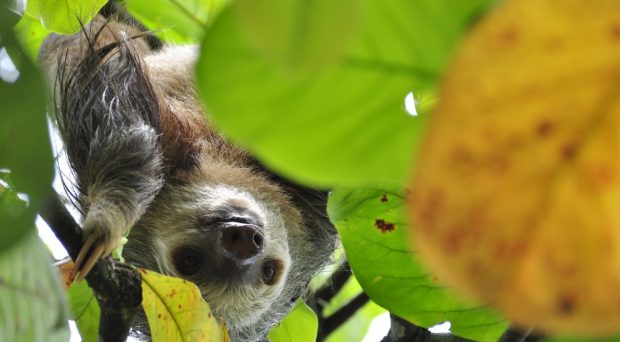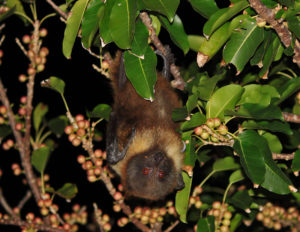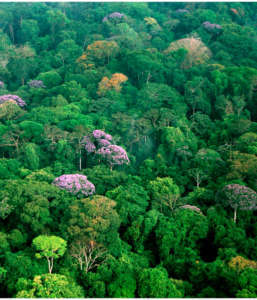

The 21st of March 2018 marks the 6th International Day of Forests. While New Zealand spends the day making sustainability sexy, and the UN announces the winner of its photo contest, the BMC Series blog is celebrating with a roundup of four fantastic BMC Ecology publications from 2017-2018. These publications investigate the mechanisms of mixed forests, the relationships between flora and fauna, how plant communities are shaped and species pool estimation methods. The result of all of this research is an increased understanding of our forest ecosystems, and the species which reside within them.
Root adaptations in co-cultures of trees – How forests grow and adapt

When forests consist of a mixture of species, rather than just one (a mono-culture), they are more likely to enhance ecological processes and sustainability. This is due to improved soil properties, environmental benefits and complementary resource use. The compromises and foraging strategies of different species determines the dynamics and structure of these plant communities.
Research by Shu et al investigated the effect on vertical distribution, root biomass, and form in a mixed plantation of Chinese red pine and camphor tree, as well as in their respective monocultures after 10, 24 and 45 years of growth. Their results indicated that the amount each species yields, when grown in a mixed culture, correlates with the amount of interaction and competition between roots below the ground.
It was also found that the camphor tree invested more carbon into its root biomass in the mixed culture. However, the Chinese red pine adapted to the mixed culture by modifying its vertical distribution and root form flexibility. These different root foraging strategies could help to demonstrate the different forest growth strategies for co-occurring species, as well as contribute to the failure or success of a species over time.
The relationship between Ryukyu flying-foxes and fig trees in East-Asian subtropical island forests

Fig trees are valuable resources for many animals in a forest as they provide food and shelter for a wide variety of species. Flying-foxes are major consumers, and therefore seed dispersers, of many fig species within forests. Lee et al studied the Ryukyu flying-fox foraging dispersion and the relationships with tree species composition and fig abundance in the forests of Iriomote island in East Asia.
The researchers found that Ryukyu flying-fox density on the island was positively dependent on the relative density of total figs, particularly the Hauli tree and the Common Red-stem Fig which are both dispersed by bats, including flying-foxes. The Ryukyu bats used these species as their predominant foods.
It was also found that intermediate levels of crop sizes of these figs were most adept for the solitary foraging which the Ryukyu flying-foxes undertake. The researchers suggest that if the density and average coverage of these predominant species decrease below a certain level, so to do their chances of attracting and therefore being dispersed by the bats which are attracted to them.
How ecological processes affect community structure in temperate forests in North Eastern China

Research conducted by Fan et al. seeks to understand the relative importance of different ecological processes in affecting the community structure of a forest. Their study seeks to understand how taxonomic structure is affected by the scale of a forest community; how the taxonomic structure may effect various processes, such as competition between species, at a local scale; whether the effect of local processes on the taxonomic structure varies with forest community scale; and whether these analyses provide similar insights when compared to the use of phylogenetic information.
The researchers found that the effect of abiotic factors is greater that the effects of interspecific competition on shaping the local community at nearly every scale. They also found that local processes did influence the taxonomic structures, but their combined effects varied with the scale of the forest community. The taxonomic approach provided similar insights as the phylogenetic approach and consequently, analyzing the taxonomic structures may be a useful tool for communities where suitable phylogenetic data is not available.
Estimating Species Pools for a Single Ecological Group

A species pool is a set of species occurring in a particular region. Research by Shen et al. seeks to develop a statistical method for estimating species pools for a single local community. With only limited local abundance information, they developed a simple method to estimate the area and richness of a species pool for a local community.
The research took place in the Barro Colorado Island of central Panama. Their model predicted that the local species pool for the 0.5 km2 plot was almost the whole island. Tree species richness in this pool was estimated at approximately 360. Further statistical tests indicated that the true values of species richness and area size for the hypothetical species pool were covered by the 95% confidence intervals of the true values.
The statistical method that has here been developed may fill a gap in knowledge on estimating species pools for a single local ecological assemblage with limited information.
Comments